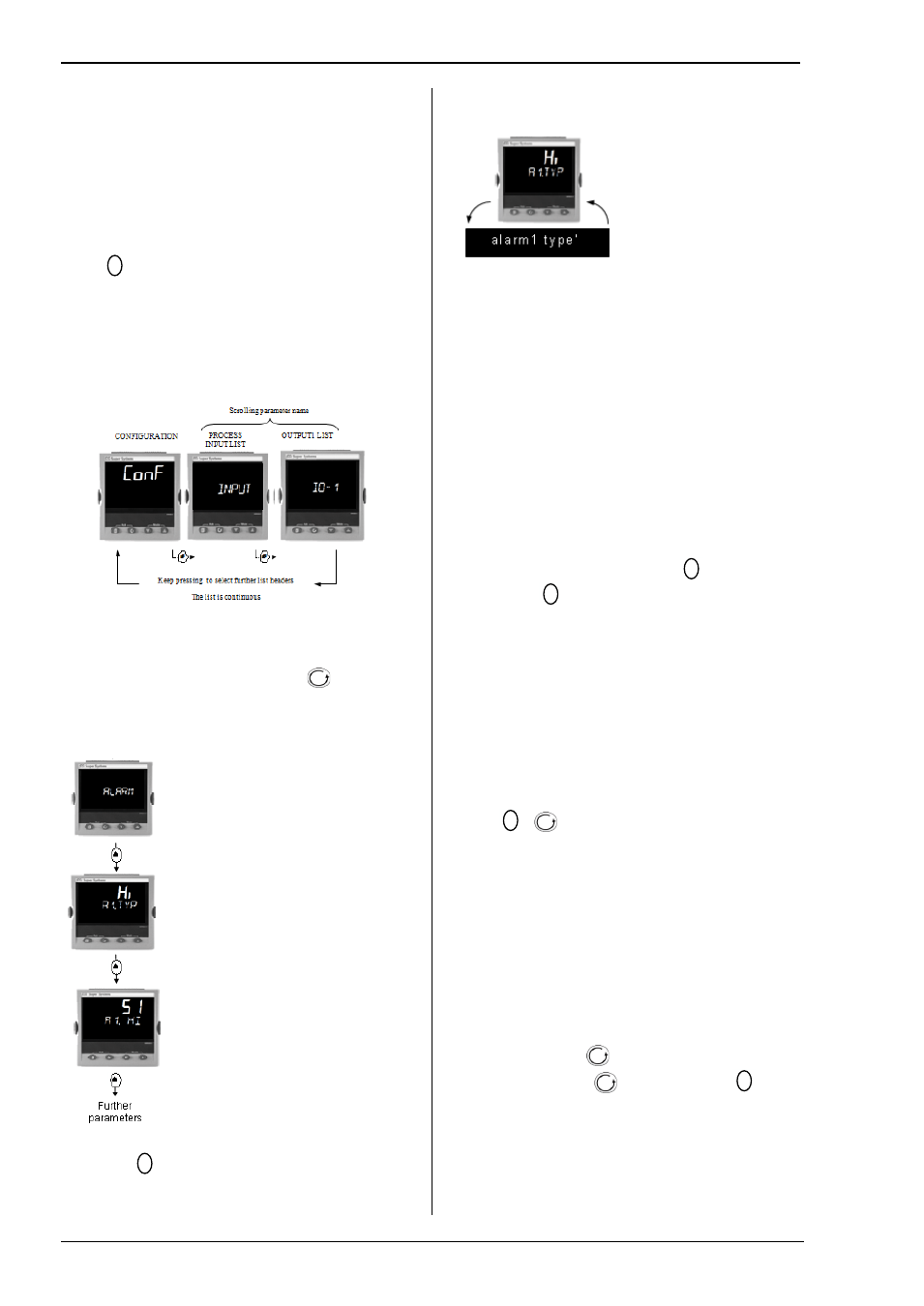3 parameter lists, 1 to choose parameter list headers, 2 to locate a parameter – Super Systems 3L Series User Manual
Page 20: 3 how parameters are displayed, 4 to change a parameter value, 5 to return to the home display, 6 time out, Parameter lists, To choose parameter list headers, To locate a parameter

Operations Manual
Series 3L
20
5.3 Parameter lists
Parameters are organized in lists. The top of the list
shows the list header only. The name of the list
header describes the generic function of the
parameters within the list. For example, the list header
‘ALARM’ contains parameters which enable you to set
up alarm conditions.
5.3.1 To Choose Parameter List Headers
Press
. Each list header is selected in turn every
time this key is pressed.
The name of the list header appears in the lower
display, followed, after a few seconds, by a scrolling
longer description of the name.
The following example shows how to select the first
two list headers.
5.3.2 To Locate a Parameter
Choose the appropriate list, then press
. Each
parameter in the list is selected in turn each time this
button is pressed. The following example shows how
to select the first two parameters in the ALARM List.
All parameters in all lists follow the same procedure.
Press
to jump back to the list header.
5.3.3 How Parameters are Displayed
As shown above. Whenever a
parameter is selected it is displayed as a mnemonic, of
four or five characters, for example ‘A1.TYP’.
After a few seconds this display is replaced by a
scrolling banner which gives a more detailed
description of the parameter. In this example ‘A1.TYP’
= ‘alarm 1 type’. The scrolling banner is only shown
once after the parameter is first accessed.
The name of the list header is also displayed in this
way.
The upper part of the display shows the value of the
parameter.
The lower part shows its mnemonic followed by the
scrolling name of the parameter
5.3.4 To Change a Parameter Value
With the parameter selected, press
to increase the
value, press
to decrease the value. If either key is
held down the analogue value changes at an
increasing rate.
The new value is entered after the key is released and
is indicated by the display blinking. The exception to
this is output ‘Power’ when in manual. In this case the
value is entered continuously.
The upper display shows the parameter value the
lower display shows the parameter name.
5.3.5 To Return to the HOME Display
Press
+
.
On release of the keys the display returns to the
HOME list. The current operating level remains
unchanged.
5.3.6 Time Out
A time out applies to the ‘Go To’ and ‘Control Mode’
parameters. If no key presses are detected within a
period of 5 seconds the display will revert back to the
HOME list.
Press and hold
to scroll parameters forward
through the list. With
depressed, press
to
scroll parameters backward.
